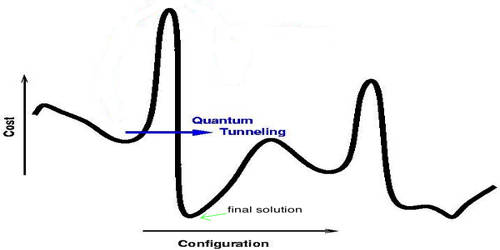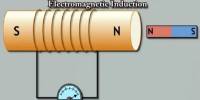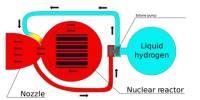Tunneling is a quantum mechanical effect. Quantum tunneling or tunneling (US) is the quantum mechanical phenomenon where a subatomic particle passes through a potential barrier. A tunneling current occurs when electrons move through a barrier that they classically shouldn’t be able to move through. Quantum tunneling is not predicted by the laws of classical mechanics where surmounting a potential barrier requires enough potential energy.
Quantum tunneling plays an essential role in several physical phenomena, such as the nuclear fusion that occurs in main sequence stars like the Sun. It has important applications in the tunnel diode, quantum computing, and in the scanning tunneling microscope. The effect was predicted in the early 20th century, and its acceptance as a general physical phenomenon came mid-century. It is the quantum-mechanical effect of transitioning through a classically-forbidden energy state.
Fundamental quantum mechanical concepts are central to this phenomenon, which makes quantum tunneling one of the novel implications of quantum mechanics. However, in the quantum mechanical world, electrons have wavelike properties. These waves don’t end abruptly at a wall or barrier but taper off quickly. If the barrier is thin enough, the probability function may extend into the next region, through the barrier! The barrier may be a physically impassable medium, such as an insulator or a vacuum, or a region of high potential energy. Quantum tunneling is projected to create physical limits to the size of the transistors used in microprocessors, due to electrons being able to tunnel past them if the transistors are too small. Quantum tunneling seems to happen instantaneously – or at least, so incredibly quickly that it’s essentially instantaneous. When an electron moves through the barrier in this fashion, it is called tunneling. According to the researchers, it takes less than 1.8 attoseconds, which is a billionth of a second.
Tunneling is often explained in terms of the Heisenberg uncertainty principle that the quantum object can be known as a wave or as a particle in general. Quantum mechanics tells us that electrons have both wave and particle-like properties. Tunneling is an effect of wavelike nature. In other words, the uncertainty in the exact location of light particles allows these particles to break rules of classical mechanics and move in space without passing over the potential energy barrier. Quantum tunneling has no counterpart in classical mechanics, in which a particle can never cross an energy barrier with a higher energy level than the particle has.
















